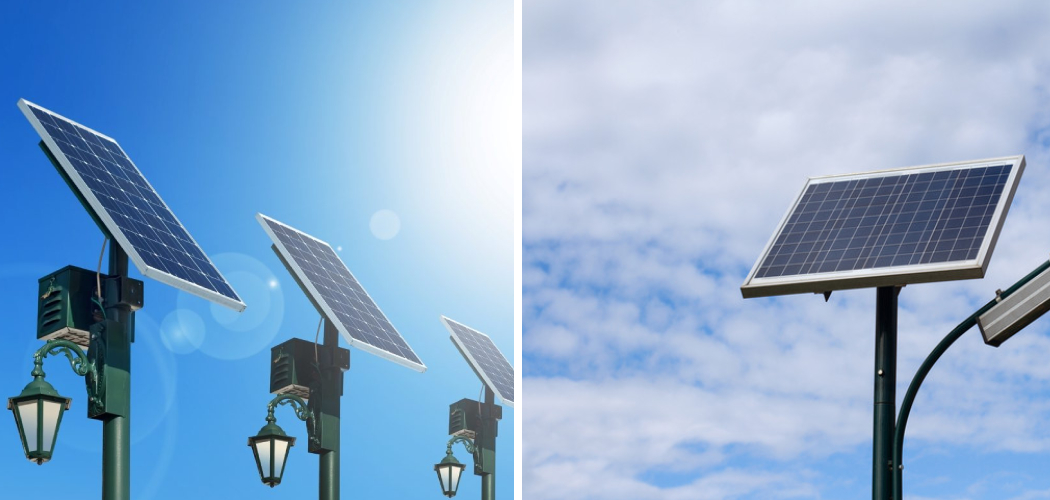Having your solar lights falling over can be a huge nuisance, especially in an area where it is difficult to access them. Not only will it make replacing the lights harder, but it also takes away from your outdoor ambiance. It is important to ensure your solar lights are securely held in place for the best performance and reliability.
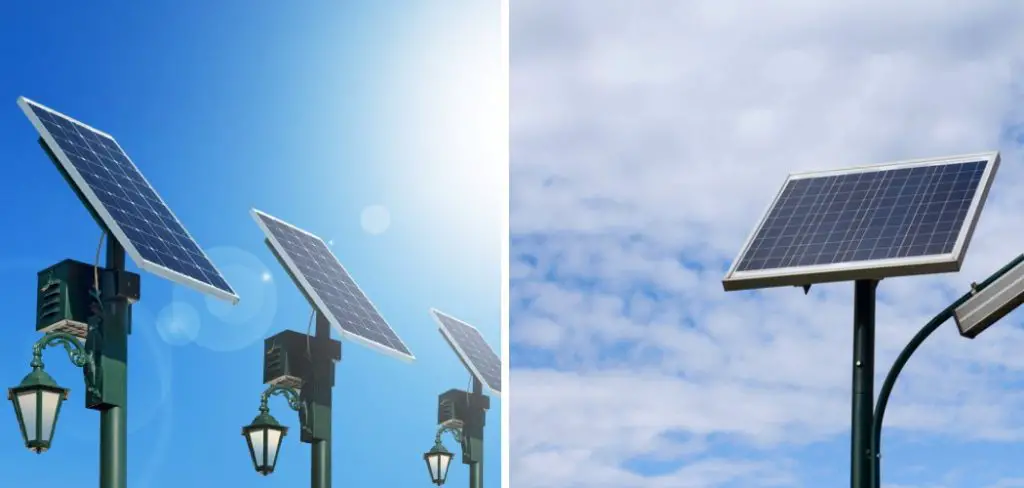
Solar lights are an environmentally friendly and cost-effective way to light up your outdoor living space. However, one of the common issues with solar lights is that they can be top-heavy and tend to fall over if not properly secured. In this article, we’ll discuss keeping your solar lights in place so you don’t have to worry about them tipping over. You can find step-by-step instructions on how to keep solar lights from falling over in this blog article.
Materials You Will Need
- Solar lights
- A shovel or trowel
- Pebbles, gravel, sand, or soil
- Heavy rocks or bricks
- Hammer and nails (for use with rocks/bricks)
- Rope or bungee cords
- Decking screws and drill bit (for use with decking boards)
- Noncorrosive screws (for use with wooden stakes or trellises)
- Decking boards, wooden stakes, or trellises (optional)
- Waterproof adhesive (optional)
Step-by-step Instructions for How to Keep Solar Lights From Falling Over
Step 1: Inspect the Lights for Stability
Many solar lighting packages come with ground stakes that will help keep your lights from falling over. If the lights still need to be equipped with ground stakes, you may need to purchase some separately. Take your lights outside and test them in different locations before installing them to ensure they are stable. For example, try placing them on a flat surface rather than the ground.
Step 2: Use Sandbags or Other Weights
If your lights don’t come with ground stakes, use sandbags or other weights to keep them in place. You can also use rocks or bricks to help weigh down the base of the light fixtures. If possible, locate your lights in areas protected from strong winds. This will help prevent the lights from falling over due to heavy gusts of wind.

Step 3: Secure the Lights With Guy Wires or Rope
You can also use guy wires or rope to secure your lights. Ensure you attach the guy wires or rope securely so they don’t come undone in strong winds. Installing solar lights in planters can help keep them from falling over. Be sure to use a planter that is large enough and heavy enough to hold the lights securely.
Step 4: Install Ground Stakes at an Angle
Some ground stakes come with angled tips, which can help increase the stability of your lights. If you have this type of ground stake, install them at an angle for added safety. If you can find a heavy base that will fit your light fixtures, consider installing it beneath each light to protect against falling over.
Step 5: Make Sure Your Lights Are Level
Make sure your lights are level before you turn them on. This will help prevent the lights from falling over due to unbalanced weight distribution. Be sure to regularly clean the solar panels to absorb as much sun’s energy as possible. Keeping your solar panels clean will help keep your lights bright and steady.
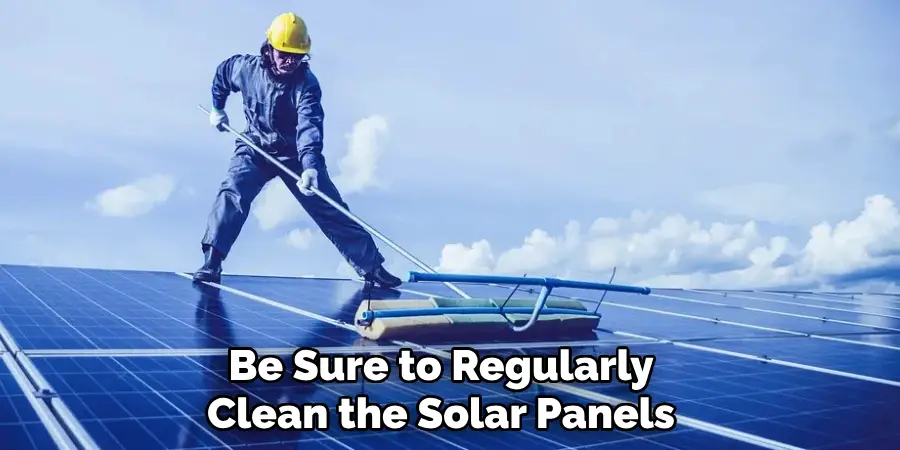
Following these simple steps, you can help keep your solar lights from falling over and enjoy their beauty for years. With some preparation and effort, you can set up your solar lighting system safely and securely.
Tips for How to Keep Solar Lights From Falling Over
- Place solar lights on a secure surface, such as concrete or soil. Avoid placing them near objects that could cause the light to tip over.
- Use stakes and ground spikes to reduce wind resistance and keep your solar lights in place.
- Keep solar lights clear of debris, such as leaves or snow, which may accumulate around the base of the light.
- Ensure the solar panel faces south to maximize sunlight exposure and power absorption.
- Clean your solar lights regularly with a soft brush or cloth so that dirt, dust, and debris do not accumulate on the surface of the light, which may reduce its stability.
- Check for loose screws or bolts that may have come loose over time. Tighten any screws or bolts to ensure the solar light is firmly in place.
- Consider adding an anchor point such as a metal or wooden stake to increase stability and reduce the movement of your solar lights due to wind or other external forces.
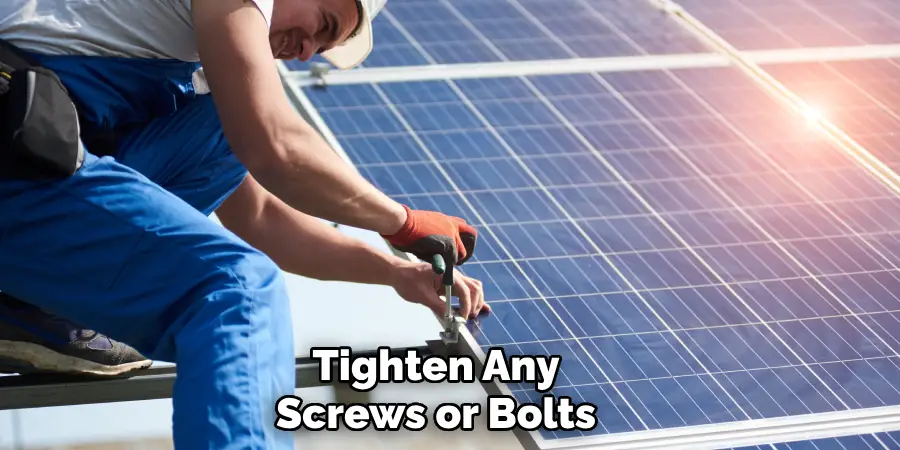
These simple tips will allow you to enjoy your solar lights with peace of mind knowing they are secure and will not fall over. With a little bit of care and maintenance, you can extend the life of your solar lights and have them lighting up your outdoor spaces for years to come.
What is the Best Way to Secure Solar Lights in Soil or Grass?
One of the best ways to secure solar lights in soil or grass is by using stakes and ground spikes. Stakes should be driven at least 6-8 inches into the soil, with the light sitting atop the stake for support. Ground spikes can be used as well, which are easy to install and do not require any additional tools.
Simply push the spike into the soil, and your light should be firmly secured. This method is ideal for smaller solar lights, such as garden path lights or spotlights, as they can be easily moved.
An additional anchor point may be necessary for larger solar lights, such as a floodlight or security light. Add a metal stake to provide extra stability and reduce movement due to wind or other external forces.
This is especially important if the light is in a windy area or subjected to frequent heavy winds. By following these simple steps, you can ensure your solar lights are secure and will not fall over. With proper care and maintenance, your solar lights should provide you many years of use.
How Often Should You Check for Loose Anchors or Stakes?
You should check their anchors or stakes every couple of months to ensure that your solar lights will remain standing. Make sure they’re firmly planted in the ground and not loose.
If any of them appear wobbly, use more sand or dirt to secure them in place. You may need to replace the stakes if they are bent or have lost completely. You can also use additional items like rocks, bricks, or pegs to secure the lights in place and keep them upright.
If you’re using metal stakes, use a rust-resistant variety so they don’t rust over time. It’s also important to regularly check your solar lights for signs of damage. Make sure the solar panels are still working properly and that the batteries are holding a charge.

Also, if your lights have covers, make sure they are securely in place so no dirt or water can get inside and damage them. Keeping your solar lights clean is another important step to ensure they remain upright and functioning well.
Are There Any Best Practices for Store Solar Lights During the Winter Months?
Yes, there are a few best practices for how to store solar lights during the winter months. If you’re storing them outdoors, ensure they are in a sheltered area that’s not exposed to extreme temperatures or direct sunlight. This will help keep them from being damaged by too much heat or cold. If you’re storing your solar lights indoors, keep them away from moisture and humidity.
Put them in a dry place that won’t get too hot or cold. Also, if you’re not using the lights for an extended period, it’s best to disconnect the batteries so they don’t drain while in storage. Finally, before storing your solar lights, clean them well to ensure they’re free of any dirt or debris. This will help keep them in good condition and ready for use when you need them again.
Should You Remove the Solar Lights During Inclement Weather?
One of the most common questions consumers ask is whether or not they should remove their solar lights during inclement weather. The short answer to this question is that it depends on the type of solar lights you have purchased and what kind of environment they are installed in. For example, if you’ve purchased waterproof solar lights with a sturdier construction, it is generally safe to leave them outside during inclement weather.
However, if you have purchased a lighter-duty solar light that is not waterproof, removing the lights and storing them indoors when there are heavy rains or snowfall may be a good idea.
Additionally, if your solar lights are installed in an area where they could be hit by debris during strong winds, it is often a better idea to bring them inside rather than risk having them knocked over and damaged. By considering these considerations, you can ensure that your solar lights remain in good condition regardless of the weather conditions outside.
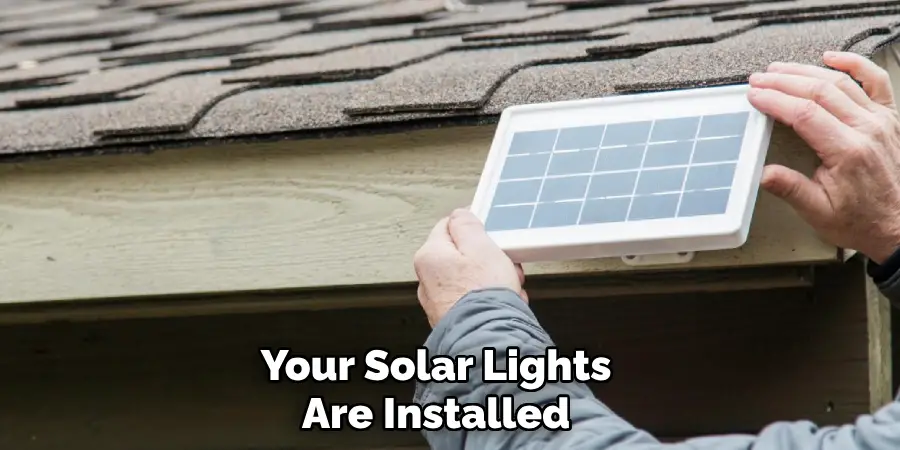
Are There Any Special Considerations for Cleaning and Maintenance?
There are some special considerations for cleaning and maintaining your solar lights. The first step is to turn off the power switch that controls the light before beginning any cleaning or maintenance. This will prevent any potential electric shock while working on the lights.
- Inspect all solar light components for signs of damage, such as cracked or worn-out parts. If you find any such signs, then it is best to replace the components before attempting to clean them.
- Use a mild detergent and water solution to wipe away dirt or dust from the exterior of the solar light. Avoid harsh chemicals or abrasive materials as they may damage the light’s surface.
- After cleaning, dry the light completely before turning it back on. This will help prevent any short-circuiting or malfunctioning of the solar light due to moisture.
- Inspect your solar lights regularly for any signs of damage or wear and tear. If you notice any such issues, it is best to replace or repair the affected parts. This will help keep your solar lights functioning properly for a longer period.
By following these steps, you can ensure that your solar lights stay in good condition and remain functional for many years.
Are There Any Other Benefits Of Using Solar Lights?
In addition to helping you keep solar lights from falling over, there are a few other benefits to using these devices. Firstly, solar lights can help save energy and reduce your electricity bill as they do not require any external power source and instead harvest the sun’s energy for functioning.
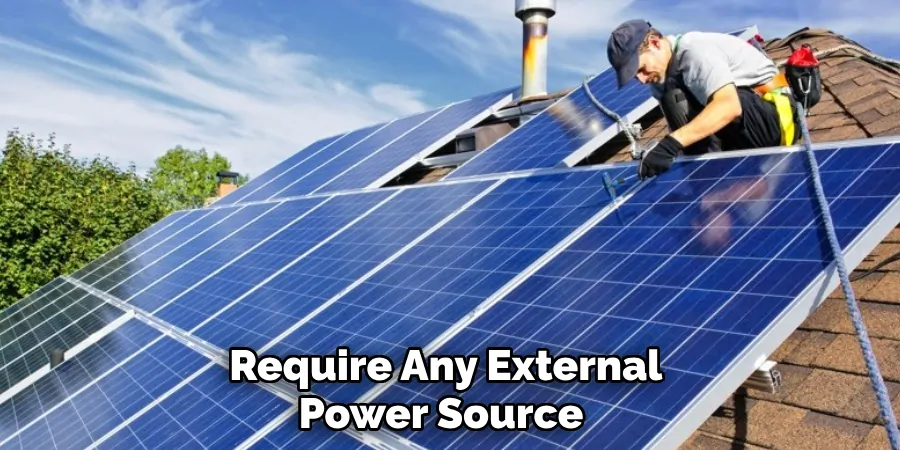
Solar lights also come with an environmentally-friendly benefit, as they help reduce light pollution by only emitting lights when used. This helps create a more pleasant lighting experience for both people and animals.
Additionally, solar lights are straightforward to install and require minimal maintenance, making them an ideal solution for areas that are hard to access or need quick lighting. Considering all these benefits, you can see why solar lights are becoming increasingly popular for residential and commercial applications.
Conclusion
In conclusion, keeping solar lights from falling over can be simple. With the right tools and materials, you can have a secure set of lights that won’t move around or topple in windy conditions. You can purchase weighted bases to place your lights on, install ground stakes, use landscape fabric, and add anchors for extra stability.
Investing in these solutions lets you know that your solar lighting will stay upright and secure. I hope reading this post has helped you learn how to keep solar lights from falling over. Make sure the safety precautions are carried out in the order listed.

